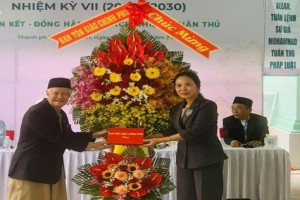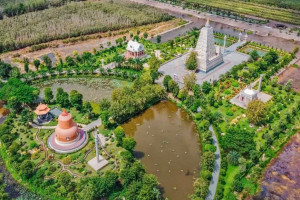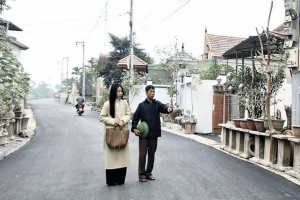
The Buddhist community at Watt Munisotaram, a mostly Cambodian refugee community approximately 40 kilometers south of Minneapolis, Minnesota, has sought to boost awareness with an expanded sacred dance troupe. The move began this winter with an open enrollment for new dancers, which has attracted more than 20 people.

From apnews.com
Inside the temple, where 10 resident monks offer daily chanting and meditation, Venerable Vicheth Chum spoke on the importance of the “blessed dance.”
“Very important to have, and to keep our ancestral tradition even when moved to [Minnesota],” said Ven. Chum, who came to the United States from Cambodia more than 20 years ago. “Buddhist teaching is practice for peace and happiness, no matter the nation.” (AP News)

From apnews.com
The dance serves two main purposes. First, each performance tells a story central to the community’s Cambodian and Buddhist heritage. Second, it strengthens the community around their shared cultural heritage, despite being more than 13,000 kilometers from their ancestral home.
“The connection is stronger when I dance,” said Sabrina Sok, 22, a leader of the temple’s dance group. “The thing that stays in my head is this dance form almost disappeared with the Khmer Rouge.” (AP News)
The Khmer Rouge, or the Communist Party of Kampuchea (as Cambodia was known at the time) ruled the country from 1975–79 and was known for its aggressive campaign to create an idealized communist state. In doing this, they emptied cities, sending many people back to work in fields. They killed or imprisoned vast numbers of intellectuals, who were seen as potential threats to the government. They also killed an estimated 25,000 Buddhist monks and destroyed a third of the nation’s monasteries. Members of other religions, such as Islam and Christianity, were also persecuted.
Cambodians fleeing the Khmer Rouge often went to Thailand before resettling in various regions of the US. In 1982, the Minnesota Cambodian Buddhist Society was created by refugees settling in the the state and Watt Munisotaram was founded. At first, the monastery existed in a rented home in Minneapolis. In 1984, it relocated to a house in St. Paul, which had better accessibility to the majority of the community due to its proximity to bus routes. Then, in 1988, the monastery moved to a house in Eagan, a suburb just south of the Minneapolis-St. Paul area. That year the community also purchased a 16-hectare site further south where the monastery stands today.

From ktbs.com
Today, Watt Munisotaram is North America’s largest Buddhist monastery, according to Carleton College’s Religions in Minnesota project. The main building employs traditional Cambodian architecture and houses traditional artworks, serving as a cultural and religious home to Cambodians and other Theravada Buddhists in the region.
Just as accessibility played a role in the early years, the community found it necessary to relocate dance practices to Minneapolis this year to be closer to the majority of the community.
The dance features traditional silk clothing from Cambodia, in which dancers act out stories of their history and religion in intricate detail.
“We’re never ourselves, we’re just physical embodiments of higher spirits,” said Garrett Sour, 20, as he coached the other dancers in the movements of each part of their bodies. “Dance was seen not as entertainment but a medium between heaven and earth.” (AP News)
Sour, who studies marketing at an area university, has been dancing since he was six and learned Khmer to better understand and express the stories he and other dancers bring to life in their dance. This year, he will instruct other dancers, around 20 in total, many of whom are below the age of 13.

From apnews.com
“For me, to see the kids perform these traditional dances is verification [that] they cherish and take seriously our tradition and our religion,” said Garrett’s mother, Sophia Sour, who has long been a volunteer at Watt Munisotaram. (AP News)
According to Carleton College’s Religions in Minnesota project, there are about 10,000 Cambodians living in the state, around 75 per cent of whom are in the Minneapolis-St. Paul area. Despite the Khmer Rouge’s efforts in the 1970s, Buddhism remains strong in Cambodia today, followed by 96.9 per cent of the population, according to 2012 data published by the Pew Research Center.
Source: buddhistdoor.net/Justin Whitaker




